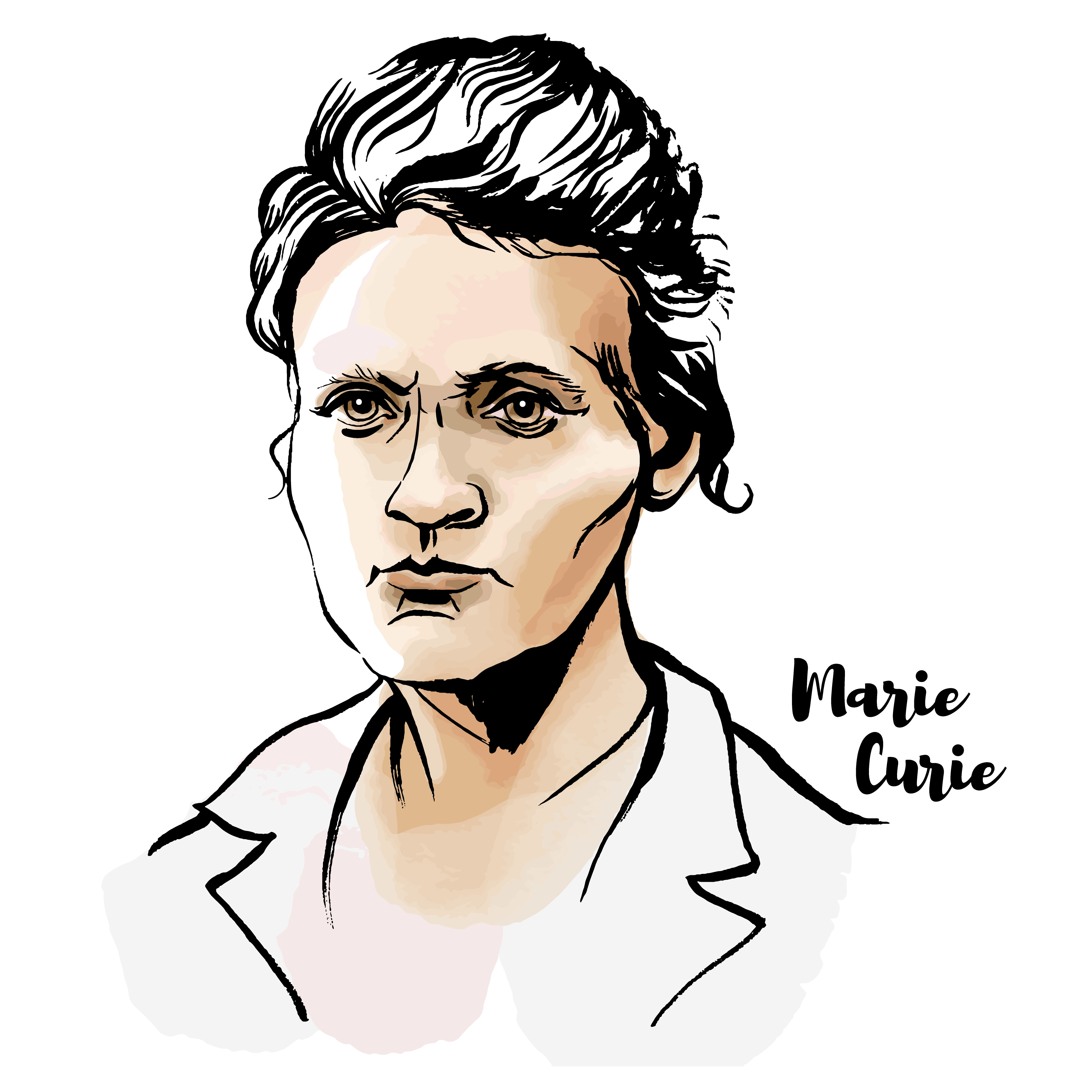
This article was originally published on November 29, 2021.
Marie Curie (1867-1934) was often the only woman in a room full of male scientists. But that didn’t stop her from being the first woman to win a Nobel Prize, as well as the first and only one to win the prize in two separate fields.
The Polish-born French physicist was recognized for her research on radioactivity, but she accumulated achievements throughout her life. Marie was wonder kid who showed exceptional skills as early as the age of four. Born to two teachers who instilled the value of education, 4-year-old Marie learned to read in both French and Russian. Equally impressive was Marie’s memory, which allowed her to recall vivid events from her early years.
In 1891, her French came in handy when the young scholar headed to Paris to continue his education at the Sorbonne University, where he studied chemistry, mathematics and physics. There she discovered two radioactive elements: radium and polonium. Soon after, she met her husband and scientific partner, Pierre Curie. They shared a love of science and research, which led to their groundbreaking discovery of radioactivity — the spontaneous emission of energetic particles or waves by unstable atomic nuclei. The term radioactivity was coined by Marie herself and caught the world’s attention.
For their pioneering work, the two were awarded the Nobel Prize in Physics in 1903. Although Marie became the first woman to receive a Nobel Prize, she did not stop there. In 1911, she became the only winner of the Nobel Prize in Chemistry her work on pure radium. Today, Marie Curie’s discoveries about the properties of radioactive elements paved the way for diagnostics and radiation therapy in medicine.
What are some interesting facts about Marie Curie?
Here are five fun facts about Marie Curie, a radiant woman who paved the way for women in science:
1. She didn’t have a fancy lab
When you think of a Nobel Prize winning physicist, you can only imagine how legitimate his workspace must be. Marie Curie may have broken barriers in science, but her laboratory was far from glamorous. When Marie and her husband tried to conduct a series of experiments to prove the existence of the elements radium and polonium, they needed a lot of space – a traditional laboratory just wouldn’t do. It turns out that Team Curie chose work from an old shed for much of their Nobel Prize-winning research.
2. She was a World War I hero
Curie helped save thousands of soldiers by developing mobile radiology units that were delivered to the front lines for use by army doctors. The portable technology allowed them to X-ray the wounded soldiers and helped them direct their operations. Over one million soldiers benefited from “Petites Curies”, Marie’s invention that comes with a generator, a hospital bed, an x-ray and the ability to save a life.
3. The Nobel Prizes are family
Winning Nobel Prizes was a family affair: the Curies had it in common a total of five Nobel Prizes. Marie held the most, with two to her name, while her husband Pierre held one. In 1935, daughter Irene Joliot-Curie followed in her parents’ footsteps and received the Nobel Prize together with her husband Frédéric Joliot for the discovery of new radioactive isotopes. Following family tradition, the youngest Curie married Nobel Peace Prize winner Henry Richardson Labois, who received the award as head of UNICEF in 1965.
4. Albert Einstein was a big fan of Marie Curie
Who would have thought that Albert Einstein was part of Marie Curie Fun Facts? In 1906, Pierre died in a tragic road accident. As a grieving widow, Marie faced the brutal sexism that accompanied her solo fame female scientist. Then that was it Einstein decided to send a glowing letter to Marie hoping to raise her. The note not only describes how Einstein was inspired by her drive and intellect, but that she had his full support. This is what the father of modern physics said about this remarkable woman: “Marie Curie is, of all known beings, the only one whom fame has not corrupted.”
5. Science love story
Nothing says true love like a shared passion for science. Marie and Pierre Curie were introduced by a colleague of Marie’s shortly after she graduated from the Sorbonne. The dynamic duo soon became partners in both life and research. In fact, it was Pierre who insisted that his wife be equally recognized when she received the Nobel Prize for their scientific discoveries. Although Marie was often undermined as a woman in a male-dominated field, Pierre supported her every step of the way.
This story is part of an ongoing series exploring famous scientists. Read more about the greatest scientists of all time:

